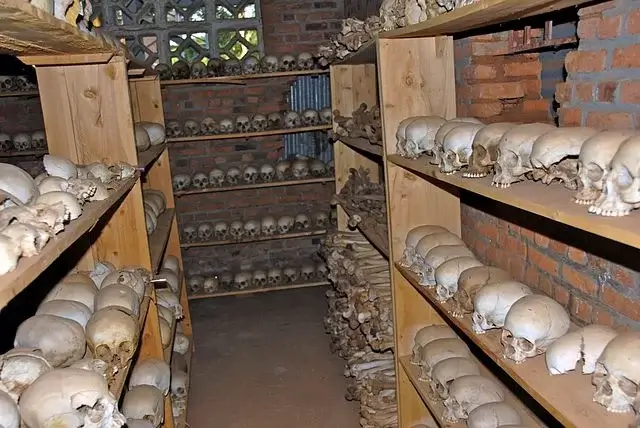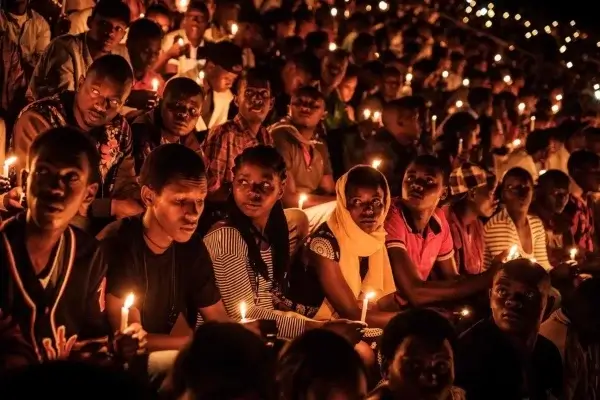Like a simmering pot on a stove, long before the devastating Rwandan Genocide of 1994, a bitter divide plagued the land. Two ethnic groups, the Hutus and Tutsis filled with tension, threatened to boil over.
This tension started way back when Belgium was in charge of Rwanda. Instead of treating everyone equally, they played favorites, giving the Tutsis more power and leaving the Hutus feeling angry and left out.
Tension Brews: Colonial Legacy
In Rwanda, the Hutus make up most of the population, but historically, the Tutsis have had more power. Back in 1959, things took a drastic turn when the Hutus toppled the Tutsi monarchy from power. This led to a wave of violence.
The Nightmare Unfolds: Rwandan Genocide Begins
Fast forward to 1994, a plane carrying the Hutu president was shot down, chaos erupted. Extremist Hutus blamed the Tutsis for the attack and used it as an excuse to unleash violence. It was a well-organized nightmare, with innocent Tutsis being targeted and killed mercilessly.
Allegations and Accusations: Blaming the Other Side
As the violence escalated, different groups pointed fingers at each other. The Tutsi-led rebel group, the Rwandan Patriotic Front (RPF), claimed that the Hutus shot down the plane themselves to justify their attacks on Tutsis. Amidst the chaos, the truth became blurred, and innocent lives continued to be lost.
Nightmare Unleashed: Chaos and Carnage
Once-friendly faces turned into enemies, tearing families apart and shattering trust. Even places meant for safety, like churches and schools, turned into battlegrounds, echoing with screams of terror.
Like bullies on a rampage, armed groups with machetes, clubs, and other weaponry wielded their weapons. People seeking refuge inside Ntarama church were burnt alive. Neighbors hunted down their neighbors, and some husbands killed their wives just because they belonged to a different group.

Silent Witnesses:
As the chaos unfolded, the world stood by, watching in horror but doing little to help. It was as if everyone had their hands tied, unable or unwilling to intervene.
The United Nations, a superhero without powers, was present in Rwanda but didn’t stop the madness. Despite knowing the scale of the horror, they hesitated to act, leaving the victims to suffer alone.
It was a tragic chapter in history where, for 100 days from April to July 1994, silence spoke louder than words.
Emergence of Hope:
In the midst of all the chaos and sadness, a glimmer of hope appeared on the horizon. Imagine a group of brave champions, like characters from a movie, rising up against the villains. That’s what happened when the Rwandan Patriotic Front (RPF), led by a courageous Tutsi named Paul Kagame, decided they had enough of the violence.
They fought tooth and nail against the extremist Hutus, gradually gaining ground until they defeated the government forces.
A beam of light pierced through the darkness, putting an end to the nightmare of genocide.
But victory came at a great cost – almost a million lives lost and millions more forced to flee their homes as refugees.
Quest for Justice and Healing:
After the dust settled and the guns fell silent, Rwanda faced a huge challenge – rebuilding and healing.
Similar to a broken puzzle, scattered into a thousand pieces, remained a nation of people waiting to be put back together. That’s how Rwandans felt as they tried to pick up the pieces of its shattered society.
The international community stepped in, setting up the International Criminal Tribunal for Rwanda to bring the culprits of the genocide to justice. Meanwhile, Rwanda itself held trials for many ordinary citizens who had taken part in the killings.
The wounds left by the genocide ran deep. Families were torn apart, neighborhoods destroyed, and trust shattered. It would take years of hard work and dedication to not only rebuild the physical buildings but also mend the hearts and minds of the Rwandan people.
Learning from Tragedy:
The Rwandan Genocide is like a cautionary tale, a warning bell ringing loud and clear. Picture a dark storm cloud gathering, sinister and frightening. That’s what happens when we leave hate and prejudice to grow unchecked.
The genocide serves as a reminder to all of us about the dangers of ignoring the signs of tension and violence between different groups of people. It’s a wake-up call, urging us to speak up and stand against injustice before it’s too late.
Remembering the Rwanda Genocide isn’t just about paying tribute to the lives lost; it’s also about making sure history doesn’t repeat itself.
Sources:
- Face2face Africa Musanze caves of Rwanda that became a safe haven for 1994 genocide victims
- BBC 2019
- Genocide Archive of Rwanda
- People hold candles in remembrance at a vigil at Amahoro Stadium

